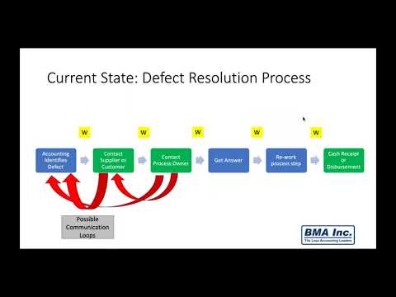
How to Reconcile in QuickBooks: Account Reconciliations in QuickBooks

It also helps you avoid issues around missed or duplicate entries. To correct transactions that have already been reconciled, locate the transaction in question and remove the reconciliation marker, such as a checkmark, to un-reconcile it. Then, make the necessary changes to ensure the transaction details accurately reflect the actual transaction. Sign up for Synder today or book a seat at a Weekly Public Demo to experience firsthand how Synder automates bookkeeping and accounting tasks for online transactions.
Data entry errors
- Reconciling ensures that your finances are accurate and up to date.
- Without reconciliation, you risk having an incorrect view of your finances, which can lead to big losses and legal trouble.
- Regular reconciliation can also make it easier to spot possible tax deductions that can save you money.
By systematically addressing discrepancies, ensuring balance, and amending previously reconciled transactions correctly, the integrity of your financial records can be maintained. For reviewing past reconciliations, navigate to the Reports menu and select Reports Center. Choose the account you’ve reconciled and select the type of report you need, whether it’s detailed, summary, or both.
After completing the reconciliation, QuickBooks will generate a reconciliation report. This report provides a detailed record of the transactions you reconciled. Unmarked transactions are ones that aren’t found within your bank statement.
How Synder can ease the reconciliation process
If you’re among them, it’s crucial to understand what reconciliation is and how to do it right. To get started, navigate to the Reconcile page in QuickBooks Online (Take me there). You can do this by clicking on the Gear icon in the upper-right corner of the screen and selecting Reconcile from the drop-down menu. Once you’re done, you should see a difference of $0, which means your books are balanced. If you forgot to enter an opening balance in QuickBooks in the past, don’t worry. Reduce your reconciliation discrepancies with your free trial of Method.
It also affects the beginning balance of your next what is the working capital cycle wcc reconciliation. So, you need to undo the reconciliation in order to re-categorize the transaction. Also, look out for transactions in QuickBooks that are exactly equal to the discrepancy you found. It’s common for a difference to be caused by an overlooked transaction or a duplicate entry.

By regularly reconciling your accounts with your bank and credit card statements, you ensure the integrity of your financial data, enabling informed decision-making for your business. As you review your bank statements and QuickBooks, select each transaction that matches. You can also confirm you reconciled a transaction by running a reconciliation report and finding the transaction in question.
If you reconciled a transaction by mistake, here’s how to unreconcile it. If you adjusted a reconciliation by mistake or need to start over, reach out to your accountant. If you’re reconciling an account for the first time, review the opening balance. It needs to match the balance of your real-life bank account for the day you decided to start tracking transactions in QuickBooks.
How to Reconcile in QuickBooks Online
Without reconciliation, you risk having an incorrect view of your finances, which can lead to big losses and legal trouble. In this post, you’ll learn when and why you should reconcile in QuickBooks. You’ll also find out some who goes to prison for tax evasion of the best practices for doing so, as well as when you might need to undo reconciliation. In contrast, QuickBooks Desktop is installed on a computer and involves a one-time purchase or an annual subscription, with manual updates and backups. Second, it provides a clear picture of your financial health, giving you updated insights into your income, expenses, and overall profitability. This information is vital for evaluating your business performance and planning for growth.
Edit completed reconciliations
You’ll want to look at your statement, starting with the first transaction listed and find that same transaction in the Reconciliation window in QuickBooks. These are transactions that general rules of tax planning for unexperienced accountants were recorded in QuickBooks but haven’t actually cleared the bank, such as checks that haven’t been cashed. Reversing reconciliation here keeps your records accurate, especially if the uncleared transaction never ends up coming through.
Remember, the goal of reconciliation is to ensure your financial records are accurate and up to date, and with these strategies, you can make the process more manageable overall. If all of your transactions come directly from your bank, reconciling should be a breeze. If they are not, the process is the same, but it might just take a little longer. If your accounts are connected to online banking, make sure you match and categorize all of your downloaded transactions. Some unmarked transactions are due to timing differences, like checks that haven’t cleared yet. You should reconcile your bank accounts in QuickBooks every month to check for inaccuracies that will harm your business.